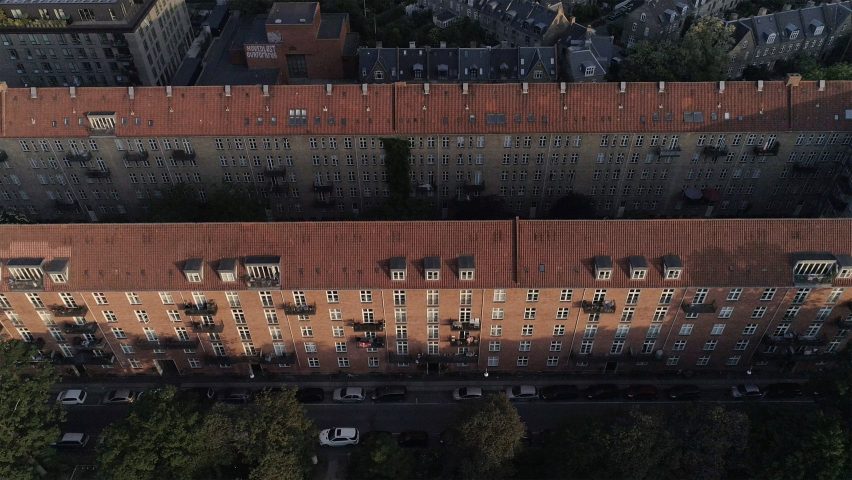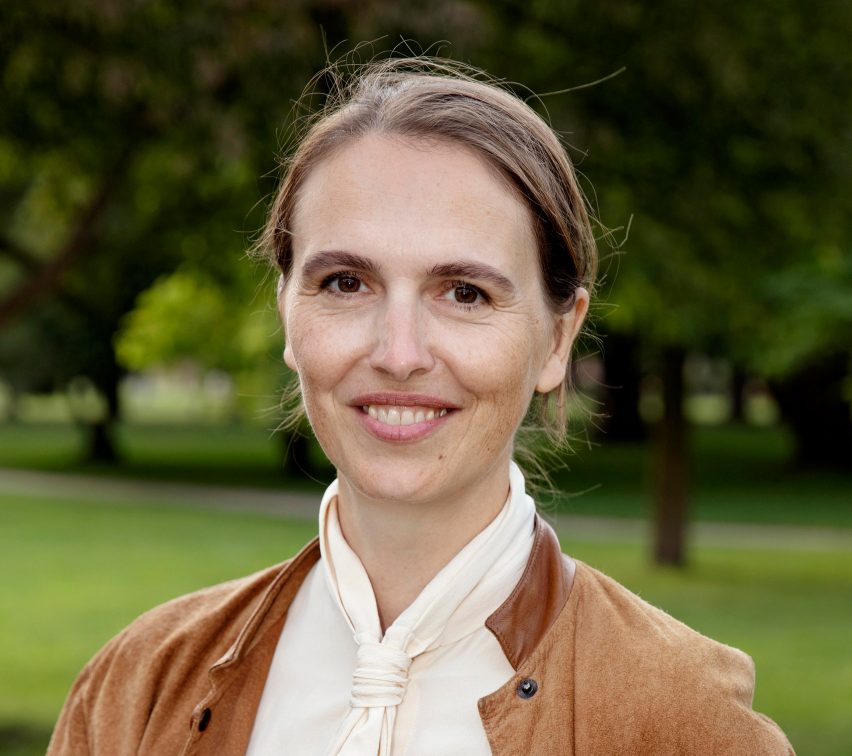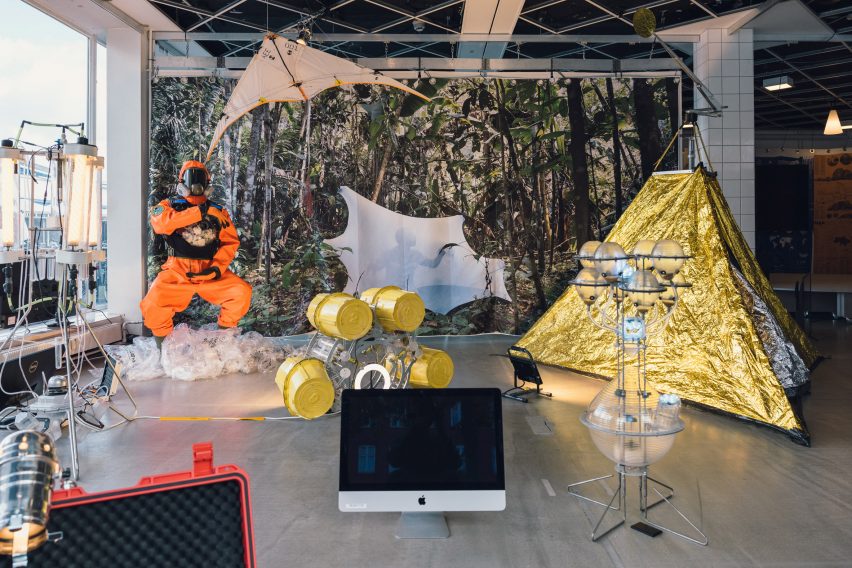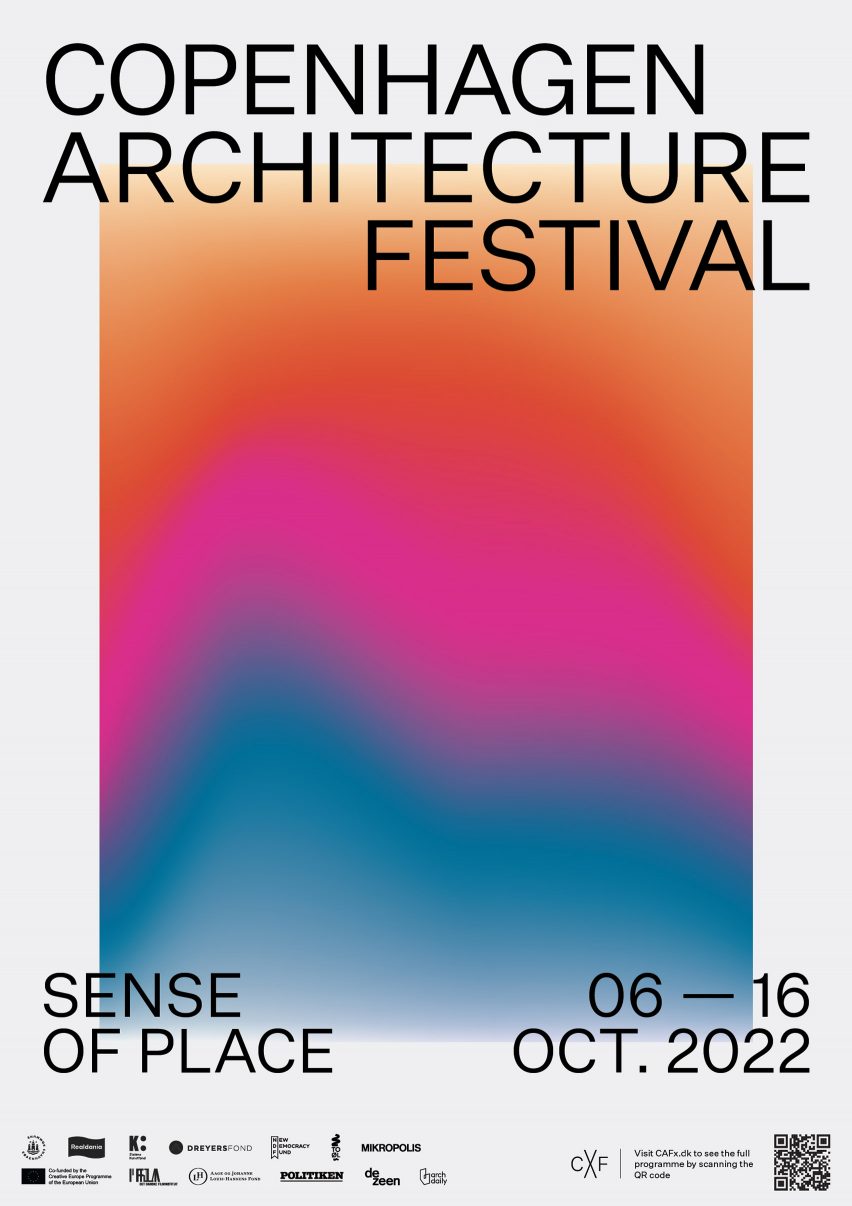
Copenhagen at risk of "becoming homogenous and self-satisfied" warns CAFx director
Copenhagen remains a difficult place to live for too many people, despite its reputation as one of the best cities in the world, says Copenhagen Architecture Festival boss Josephine Michau in this interview.
"For me – a person with an able, white, cis-gendered and average-sized body – the design infrastructure of the city is great and it's easy to move around by foot and bicycle," she told Dezeen.
"Yet, I am painfully aware that the feeling of fitting in is distributed unevenly. It is, in other words, a privilege," she added.
"So yes, the city is great and I like it here, but it has its flaws, and it has the danger of becoming too homogenous and self-satisfied."

Michau is the founder, CEO and head curator of Copenhagen Architecture Festival (CAFx), Scandinavia's largest architecture festival, which this year features more than 100 events over 11 days.
Now in its ninth year, the festival's theme for 2022 is "Sense of Place".
"I think we have in many ways lost the sense of the place we live in: for one, we continue our excessive lifestyles despite knowing that the way we consume in our part of the world exceeds what the planet can sustain," explained Michau.
"Furthermore, housing has for a large part become a financial commodity which has caused increasing social inequality, and loneliness and mental health problems are on the rise in cities," she added.
"I believe we need to refine our sense of place and 'get in tune' with our planetary boundaries, social structures, mental health, our history, nature and cultural heritage in the way we build and plan."
Opening film addressed affordability issues
The CAFx 2022 programme, comprising film screenings and debates, exhibitions, guided tours, workshops, seminars and open houses, seeks to address the fact that not all of Copenhagen's residents are able to enjoy it equally.
It formally opened with a premiere of the film "Best in the World" by Danish documentary maker Hans Christian Post, which explores the rising affordability issues in the city amid three decades of rapid development.
Famed for its ample green spaces and generous cycling and walking infrastructure, the Danish capital frequently tops rankings of cities with the best quality of life.
But Michau, whose own background is in filmmaking, is concerned that sweeping gentrification and growing economic inequality means "'the best city in the world', might only be the best city for a certain group of people".
"There are of course plenty of people (and other species) in Copenhagen who don't feel that the label is suitable for their experience of the city," she said.
"Just because Copenhagen might perform relatively well on numerous parameters in comparison with other cities, it doesn't mean we can't do better – and definitely not that we shouldn't do better."
"There's a certain generosity in Copenhagen"
However, she does believe that Copenhagen has lessons to teach other cities about urban design, such as its investment in safe bike lanes and the decision to keep the waterfront publicly owned and accessible.
"I think there's a certain generosity in Copenhagen towards its citizens that others can learn from," Michau said.
Among the exhibitions at this year's CAFx is New Methods for Big Challenges: Architecture and Extreme Environments, curated by architect and Royal Danish Academy associate professor David Garcia.
The exhibition showcases the work of students instructed to develop projects for harsh locations aimed at benefiting the local community, as a means of producing sustainable and original architecture.

"Based on the number of curious looks we get from the outside from all kinds of people passing the space, I suspect this exhibition has already been functioning as a recruiter for several future architects," remarked Michau.
"I know of one already, changing his studies in economics for architecture after having been to the opening."
Michau, who in 2019 was awarded a Henning Larsen Foundation award for her work involving people in architecture, is also curating the Danish pavilion for next year's Venice Architecture Biennale.
The pavilion will explore the future of coastal landscapes and how nature-based solutions can respond to rising sea levels.
Read on for the full interview:
Dezeen: What was your goal when putting together the programme for this year's CAFx?
Michau: The festival is offering a temporary infrastructure for public investigations into the network of desires, fantasies, techniques, and technologies that connect human habitation, natural environments, and our lived experiences. Our guiding principles are to challenge the professional boundaries of architecture, promote critical thinking and raise public awareness.
Presenting a web of screenings, performances, debates, guided tours, exhibitions, and workshops spanning across the cityscape, our method is both trans-institutional and trans-disciplinary. We insist that architecture is not just bricks, rooms, and frames. It is sensual, bodily, and social. It is political, historical, and psychological. Architecture affects all aspects of life and all lifeforms on Earth. We strive to present a programme that reflects this.
Dezeen: Have you had any highlights so far?
Michau: As I have not been able to attend all the events, far from, my answer is both very biased and non-informed. This is the unfortunate nature of festivals: the supply of events is so massive that I can't attend all of them. But the festival office and all my good colleagues spread out, so collectively we have experienced it all.
I am particularly fond of our exhibition "New Methods for Big Challenges: Architecture & Extreme Environments" in our new office/exhibition space and the programme we have developed for it. It investigates new knowledge, innovative experiments and site-specific design approaches that respond to our global challenges. It's based on the architect David A. Garcia's field research and some of his students from the master's programme "Architecture and Extreme Environments" at the Royal Academy of Architecture and consists of prototypes, drawings and films.
Based on the number of curious looks we get from the outside from all kinds of people passing the space, I suspect this exhibition has already been functioning as a recruiter for several future architects. I know of one already, changing his studies in economics for architecture after having been to the opening.

I am also delighted to have met the Finnish architect and thinker Juhani Pallasma who was invited to curate and present a series of films thematizing the arts as an informer of architecture, putting forward the argument that architecture needs art to articulate and cultivate its sensibility towards the spatial foundations of our embodied existence.
And apropos of the arts' ability to inform architecture: I am looking forward to experiencing the performance of a long-time-collaborator, Ying-Hsueh Chen, a percussionist, and Iannis Xenakis, an expert who will perform several pieces by the architect-composer in connection with his 100th Anniversary.
Finally, I will mention our opening film of this year "Best in the World" by Hans Christian Post, a film discussing the social, economic, and aesthetic consequences of the past 30 years of accelerated development in Copenhagen. To help spark this kind of debate is very satisfactory and films are often good catalysts for that.
Dezeen: Why did you choose the theme "Sense of Place"?
Michau: Having been unable to address its complicity in the logistics of our current ecological and social emergencies, architecture is now facing a crisis of architectural operationality, a moment calling for a re-engagement with the aesthetical and ethical axioms of architectural thought and practice. The festival theme is a humble attempt at returning to the arche of architecture: place, place-making, and place-sensing.
I think we have in many ways lost the sense of the place we live in: for one, we continue our excessive lifestyles despite knowing that the way we consume in our part of the world exceeds what the planet can sustain. With the built industry emitting approximately 40 per cent of the global CO2-emissions, that's a good place to start re-evaluating.
Furthermore, housing has for a large part become a financial commodity which has caused increasing social inequality, and loneliness and mental health problems are on the rise in the cities. I believe we need to refine our sense of place and 'get in tune' with our planetary boundaries, social structures, mental health, our history, nature and cultural heritage in the way we build and plan.
Conceived as a training ground for our sense of place, the festival is thus instrumentalized towards exercising our sensitivity towards the place-bound network of aesthetic needs, embodied ethics and topologies of cultural anecdotes, all of which is always already "in place" before the arrival of the technical apparatus of architects and urban planners.
Dezeen: Copenhagen is often cited as one of the best-designed places in the world. Do you think its reputation is deserved?
Michau: The foundation of evaluating spatial design is ethical, so we have to be careful of the universalism implicit in city rankings. These assessments are of course always relative to economic capabilities, forms of desire, body shapes, educational background, and so on.
For me – a person with an able, white, cis-gendered and average-sized body – the design infrastructure of the city is great and it's easy to move around by foot and bicycle. I have children and the city is quite child-friendly with plenty of institutions, playgrounds, green parks and waterfronts to swim in during the summers.
Yet, I am painfully aware that the feeling of fitting in is distributed unevenly. It is, in other words, a privilege. This is something we have tried to address in our events and a recent exhibition. Like all other major cities in Europe, Copenhagen has experienced massive gentrification and growing economic inequity. So demographics are changing, friction is missing and 'the best city in the world', might only be the best city for a certain group of people.
So yes, the city is great and I like it here, but it has its flaws, and it has the danger of becoming too homogenous and self-satisfied.
Dezeen: What can other cities learn from Copenhagen?
Michau: I think there's a certain generosity in Copenhagen towards its citizens that others can learn from. One of the qualities that other cities could copy is to make soft road usage easier and more enjoyable. We have bike lanes everywhere, not just in the city but also connecting the suburbs via bike lanes to the city centre – not just along the big roads but making the bike rides nice along green paths. This creates a lot of incitement to use the bike for transport.
Another lesson from Copenhagen might be leaving access to the waterfront open to the public – and never privatising it!
Dezeen: Are there any architects working in Copenhagen at the moment whose work you especially admire?
Michau: There is a whole new generation of architecture studios and architects who tend to work in a smaller size to keep their independence by being able to say no to tasks that they don't believe in. They work very much with the existing building material. They have a regenerative mindset, working with transformations, rather than with new buildings.
Small young studios such as Pihlman Architects, Over Byen Architects, Kim Lenschow, Djernes & Bell deserve a mention, but also larger studios such as Lundgaard & Tranberg who are similarly moving towards a more regenerative practice.
Several landscape architecture studios are also working with a highly cultivated sense of place and understanding of biodiversity and ecology, in particular Schønherr with whom I also collaborate on the Danish pavillon for Venice next year.
I also have to mention EFFEKT, who are some of the frontrunners in pushing the green transition and agenda within the industry.
Dezeen: The "Best in the World" film that kicked off the festival highlighted growing problems with affordability in Copenhagen, especially in its newer areas. Do you think the city is at risk of becoming a victim of its own success?
Michau: I mentioned the danger of becoming too self-satisfied and all the problems that the label "best in the world" might conceal. One must ask: best for who? Who is the city for?
There are of course plenty of people (and other species) in Copenhagen who don't feel that the label is suitable for their experience of the city. Just because Copenhagen might perform relatively well on numerous parameters in comparison with other cities, it doesn't mean we can't do better – and definitely not that we shouldn't do better.
Copenhagen Architecture Festival is running a series of events across Copenhagen and Aarhus, mainly between 6 and 16 October 2022. See Dezeen Events Guide for an up-to-date list of architecture and design events taking place around the world.